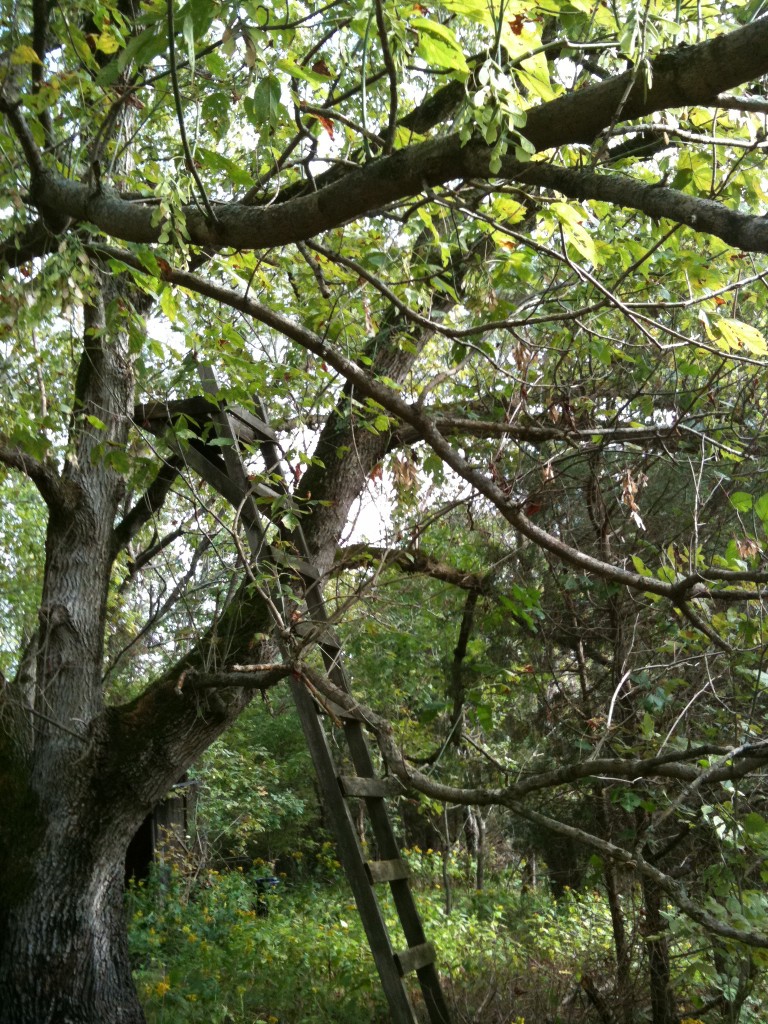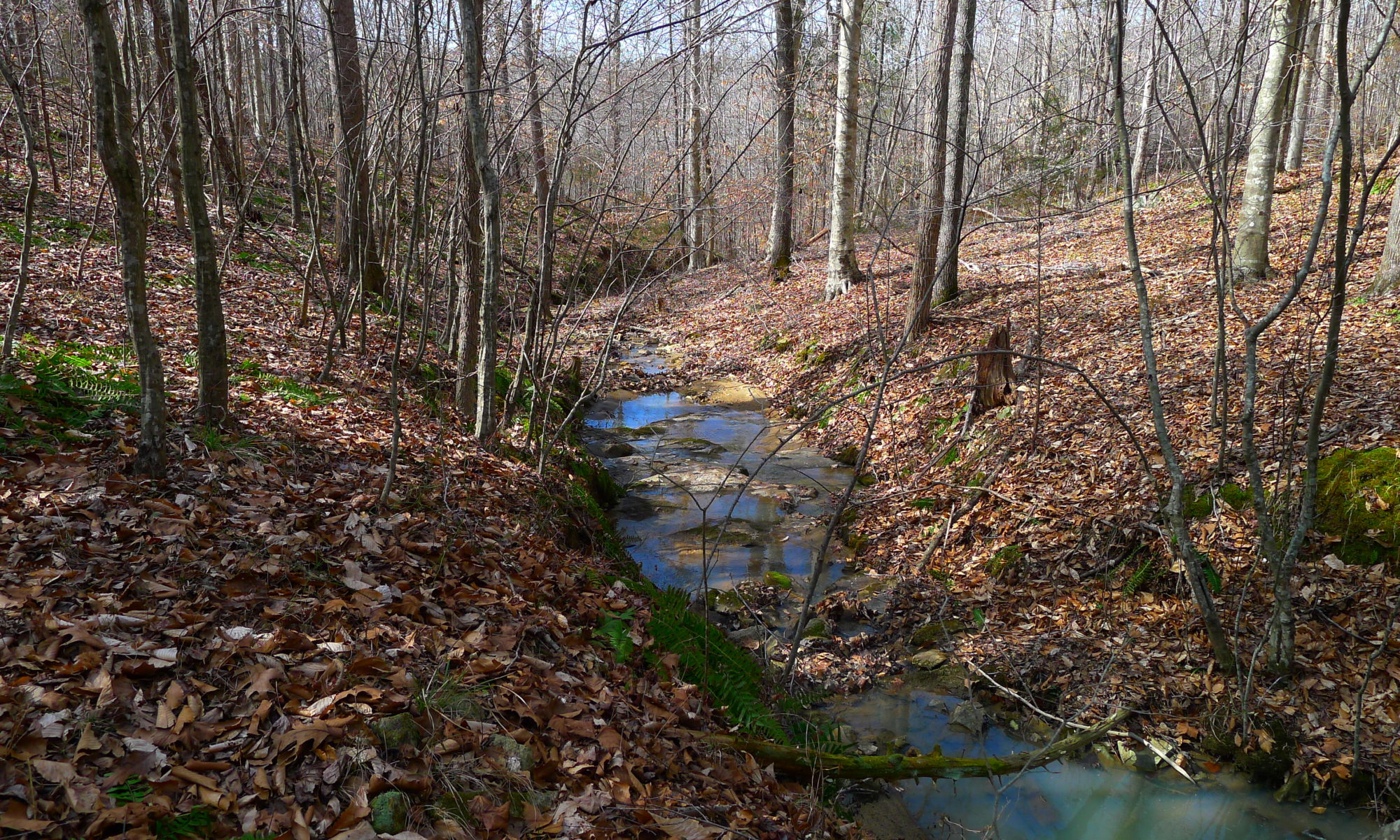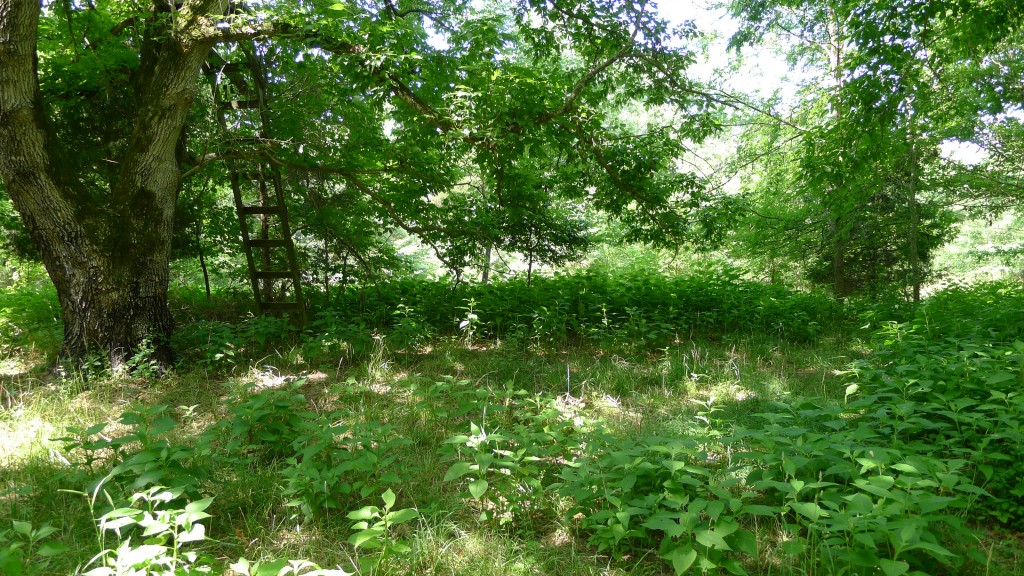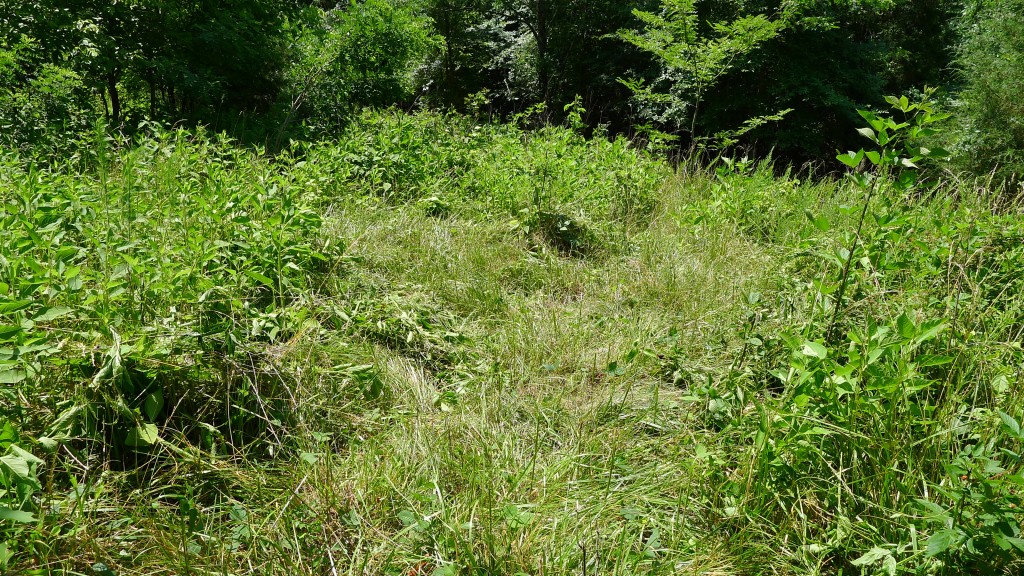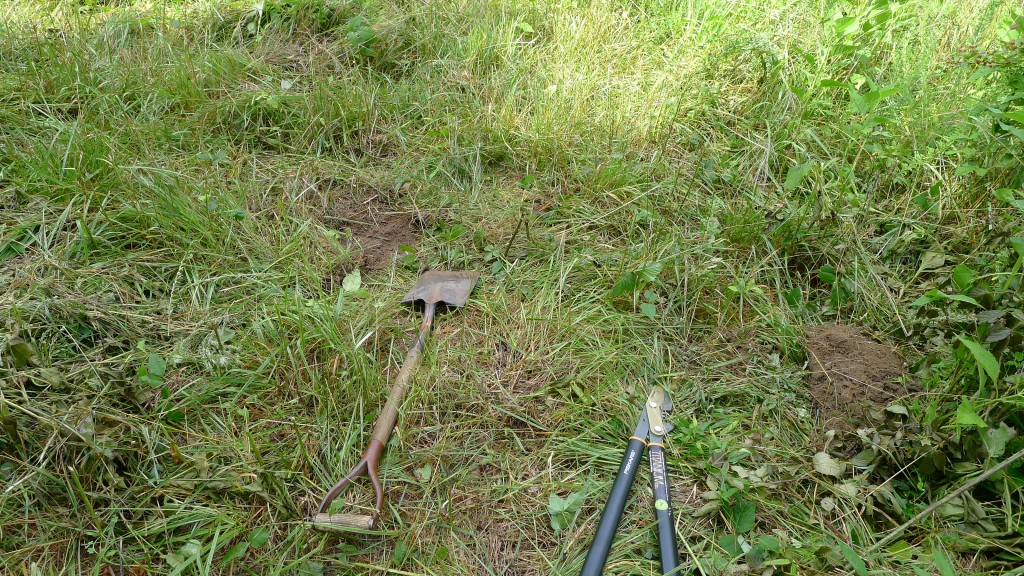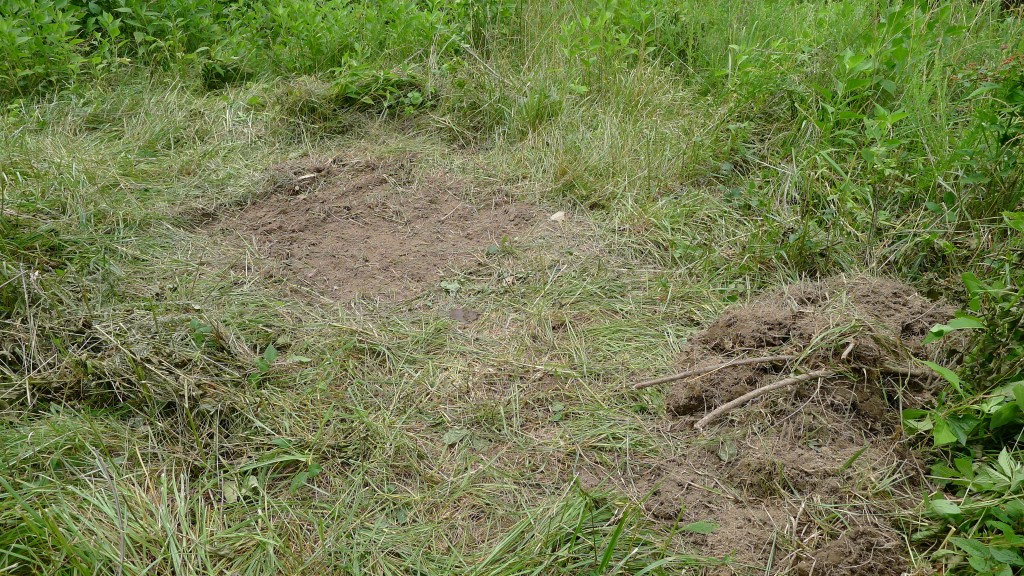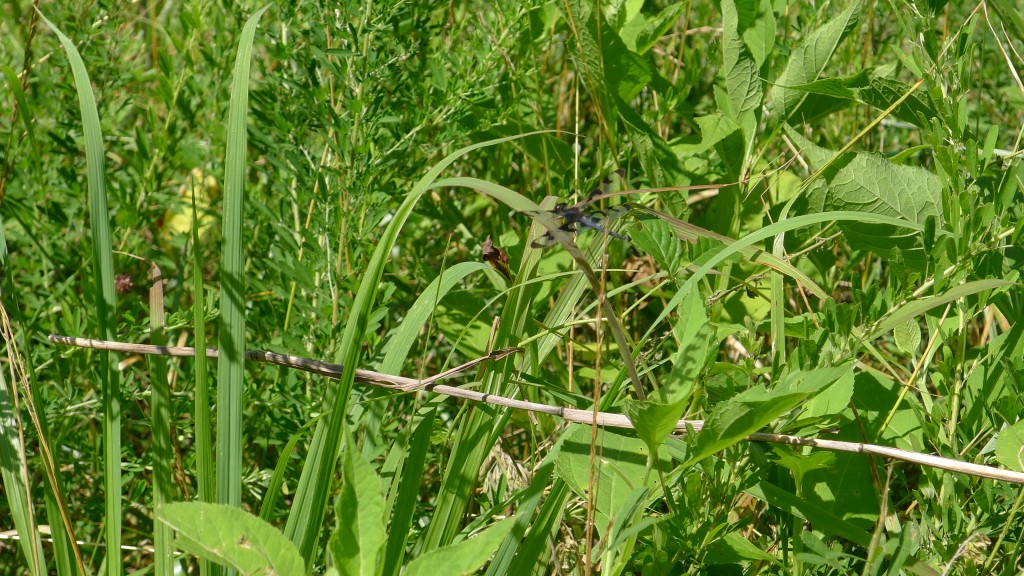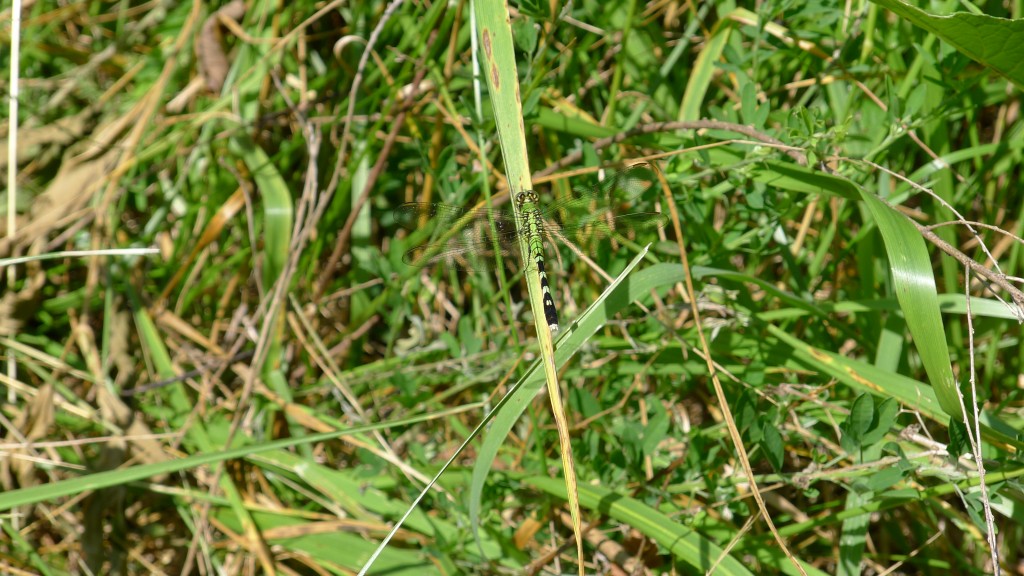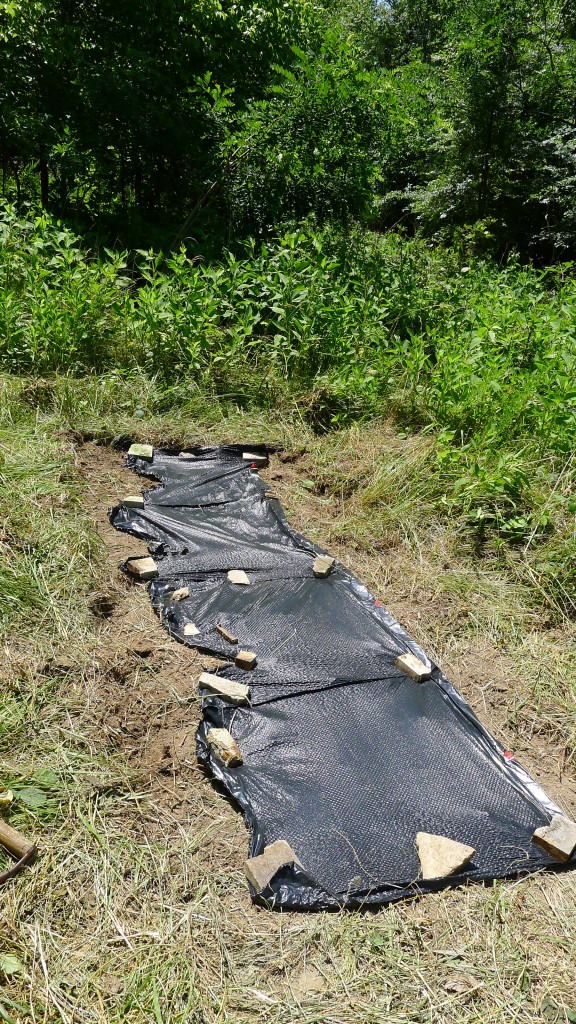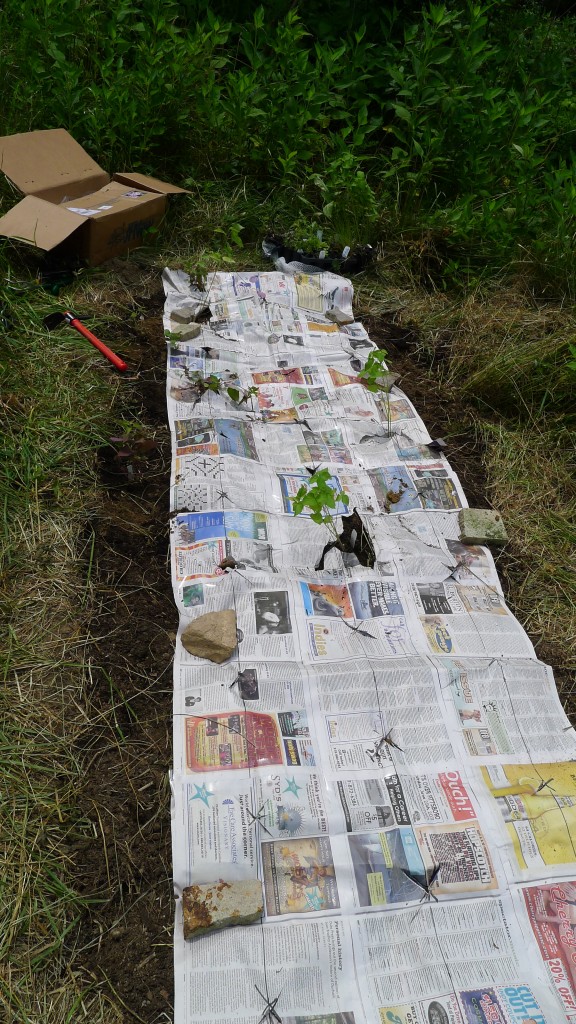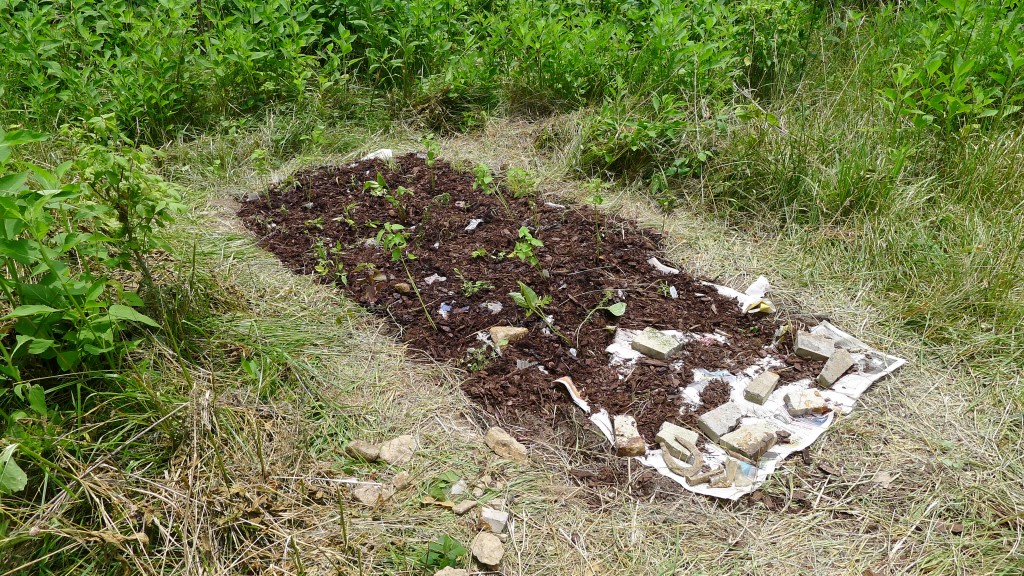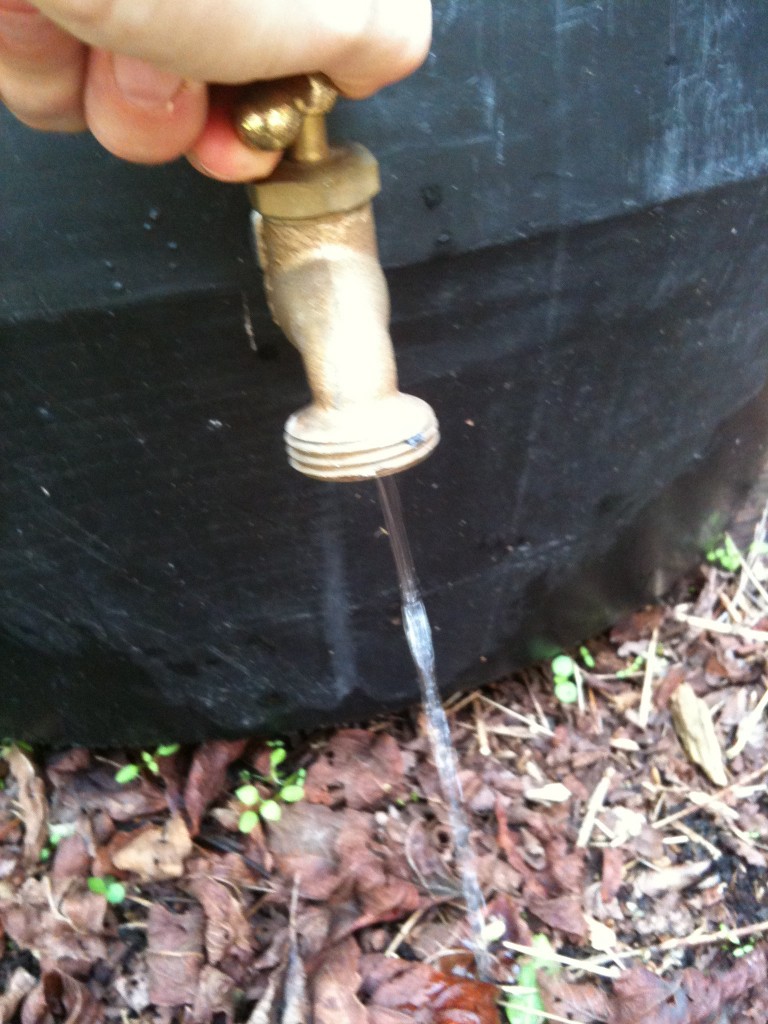
Which isn’t quite the same thing as whiskey in the jar, but made me very happy anyway. All the water in it now is from storms in the last week or two. Hurricane Irene (mercifully) must not have visited my land. (Compare with coastal NC which was badly hit, and whose communities are still trying to recover. There’s recent coverage of that here.)
Sunday’s visit was supposed to be quick: deposit veggie kitchen waste in the compost bin, and then come home. But as soon as I walk off the road and onto the trail to the homestead site, I’m blown away by the beauty and peace of the place. There’s a mosaic of lichens and mosses on part of the trail. Toadstools have bloomed in the last week, although the heavy rains have rotted most of them. I need to walk through the forest soon and look for mushrooms. My dad’s an expert on edible fungi in Britain, but I need to do what he did starting out, and collect what’s growing to identify it properly. I’m hoping there’ll be porcini and chanterelles (I’ve seen forests carpeted with these in Georgia), and will those wild boar lead me to truffles?
Anyway, what else has changed? The “crop” – the plants I and my friends spent so much time trying to control in early August – are now, what’s left of them, in full yellow flower. If anyone knows what this is, I’d love to hear from you:
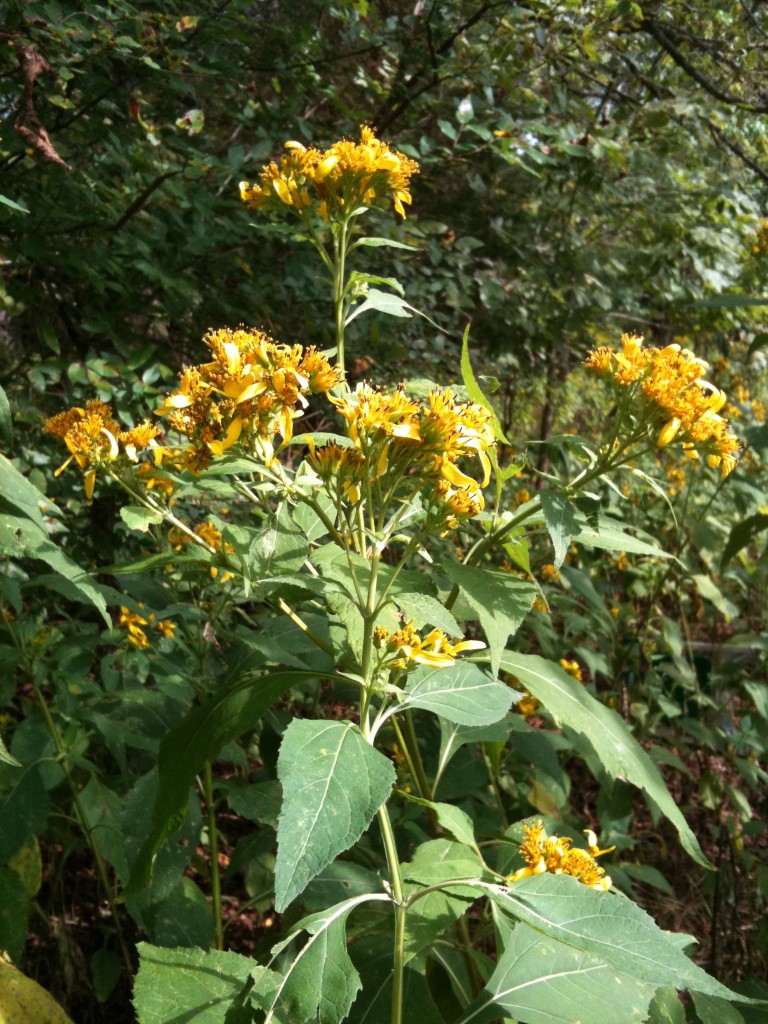
The flowers were swarming with bees, which made me feel a little guilty for chopping so much of it down. They have probably enjoyed this late summer food for years now. I’ll leave some clumps of it alone. As for their own bee garden… Not too bad, I reckon. I did a bit of weeding round the edges, but the paper weed barrier, or more probably the mulch, are holding up. The lavender hyssop is doing very well, but another five or so types of plant have made it too, just in slightly smaller numbers (i.e. only one plant in some cases). You can make out most of them in the next photo:
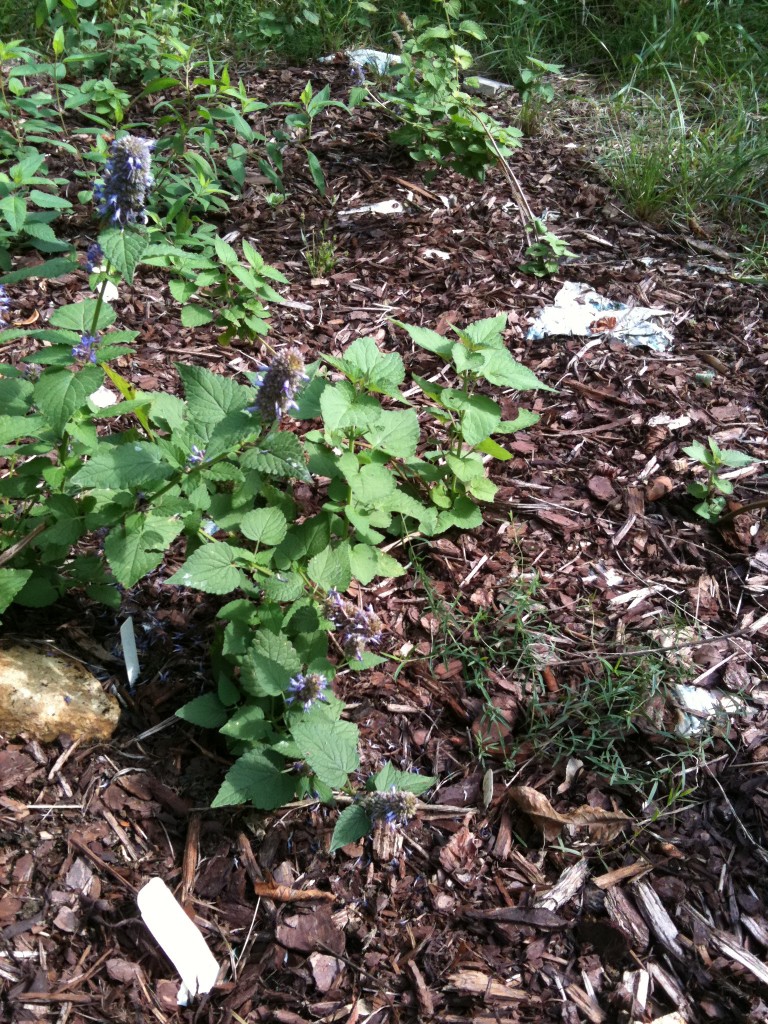
To do next: rescue the Cow Barn from the dead wood that’s fallen on it this summer. Some of it might be dry and seasoned enough to use in my wood-burning stove over winter.
And camp on the land again! No ticks – yay!! Fall Break is coming soon…
